Reliable, efficient and with stunning views at every turn,
Switzerland’s travel system really will take you on the ride of your life,
whatever your mode of transport.
Much like London’s black cabs and double-decker buses, the
little red trains, which wind long foaming rivers at the feet of towering
mountains and through verdant Alpine meadows, have become a picturesque symbol
of Switzerland. Similarly, the elegant paddle streamers, which dot the
country’s lakes, Swiss flag fluttering proudly at their stern, and the yellow
post buses, which pick their way along twisting mountain switchbacks, symbolize
the fact that it is the actual travelling through Switzerland that makes up a
large part of the pleasure of visiting this marvelous country.
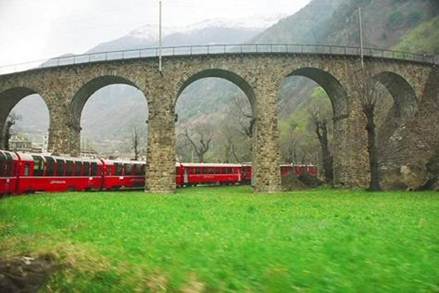
the Swiss public
transport system
Given Switzerland’s clock-making heritage, it should perhaps
come as no surprise to learn that you could set your watch by the Swiss public
transport system – you’ll never find yourself wasting valuable holiday time
waiting for the train. Furthermore, the extensive network of trains, buses,
boats and even mountain cableways is incorporated under the Swiss Travel
System, enabling you to travel the length and breadth of the country with just
one ticket, the Swiss Pass.
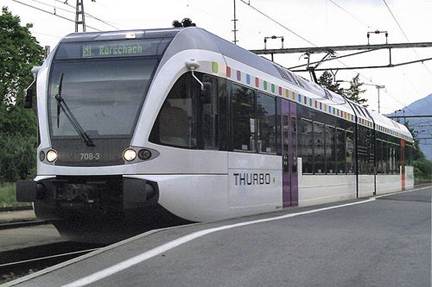
over 400 museums
and a 50% discount on most mountain-top trains and cable cars
Not only does the Swiss Pass give you unlimited access to
the country’s entire public transport network, it also provides free entry to
over 400 museums and a 50% discount on most mountain-top trains and cable cars
not already included in the pass. Families will be happy to hear that children
up to 16 can travel free with the STS family card when accompanied by an adult.
Best of all, the Swiss Travel System is offering a special
two-for-one rate on all four-day Swiss Saver Passes and Swiss Saver Flexi
Passes (which enable you to select four non-consecutive days’ travel over the
course of a month) for several months this year, meaning there could not be a
better time to explore Switzerland. To whet your appetite for discovery, here
are some journeys to choose from.
Rail

The Glacier
Express
The Glacier Express is, quite simply, one of the world’s
most iconic railways. Travelling from St. Moritz to Zermatt in
specially-designed panorama coaches, which boast outsize windows to maximize
the jaw-dropping views, you’ll spend an unforgettable day travelling over 291
bridges and ancient viaducts, past glaciers, mountains, lakes and ravines and
through traditional Alpine villages and pastures.
Bus
Board a comfortable yellow Postbus in St. Moritz for an
extraordinary journey along the Engadin valley and over the Maloja Pass before
descending into the lush Bergell valley by a series of hairpin bends, bound for
Lake Como in Italy. After a scenic drive along the shores of Lake Como, you’ll
return to Switzerland, finishing your adventure at Lake Lugano.
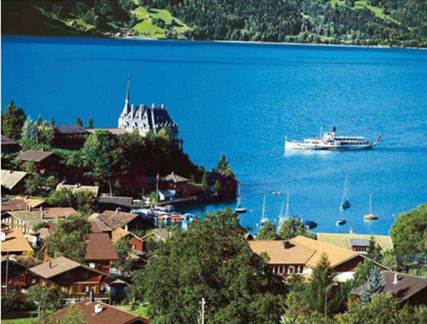
Paddle steamer on
Lake Brienz
Boat
Why stick with one lake when you can enjoy three in one day?
The day-long Three Lakes cruise is offered year-around on the idyllic lakes
Biel, Neuchâtel and Murten in the French-speaking canton of Jura. As you sail
on the lakes, and pretty rivers and canals which link them, you’ll pass
vineyards, medieval towns and St. Peter’s Island, where Rousseau was inspired to
write his most seminal works.
Boat and rail
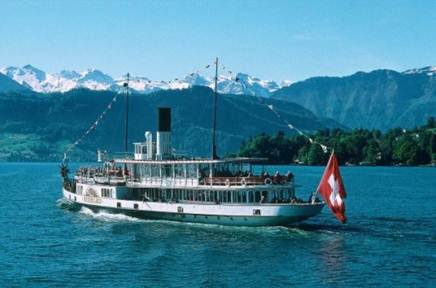
William Tell
Express - The train has been named a Swiss hero William Tell
As with other Swiss Express railway routes, the Wilhelm Tell
Express prides itself on adopting a distinctly languorous pace. Starting your
journey abroad a paddlewheel steamer on Lake Lucerne, you’ll be ushered across
the lake to the pretty town of Fluelen, enjoying a delicious lunch en-route.
Disembarking at Fluelen, the town which celebrates the life of William Tell,
who is believed to have leapt into the lake to escape the clutches of Gessler
nearby, you’ll board the Gotthard Railway to travel through the Gotthard tunnel
and into the Leventina valley in Ticino, eventually reaching the welcoming
lakeside city of Locarno.
Did you know?
Switzerland’s first railway route opened in 1847 – a 12.5
mile-long line linking Zurich with Baden. It became known as the “Spanische
Brotli Bahn” (the Spanish bun railway), reflecting the name it was given by the
servants of Zurich’s gentry, who travelled to Baden to buy freshly-baked buns
to serve to guests for Sunday morning tea.
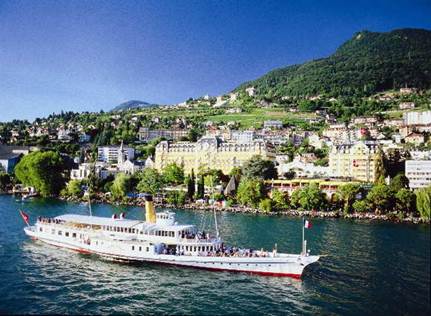
The Montreux
The Montreux paddle steamer ship on Lake Geneva was reconverted
from diesel electric power to an all-new steam engine. It’s the world’s first
electronically remote-controlled steam engine and has operating costs similar
to state-of-the-art diesels, while producing up to 90% less air pollution.